Mybatis源码分析篇------Reflector
Mybatis在进行参数处理、结果映射等操作时,会涉及很多反射的操作。Mybatis源码中的对应反射模块的部分叫做Reflector.首先我们先分清属性和字段这两个概念:
- 字段----类中定义的成员变量
- 属性----属性则是通过Getter和Setter方法获得的,跟有没有这个成员变量没有关系。
下面我们就开始分析这个反射模块(注意:下面分析的源码的Mybatis的版本是3.4.6,如果有什么错误,欢迎大家在评论指出):
字段
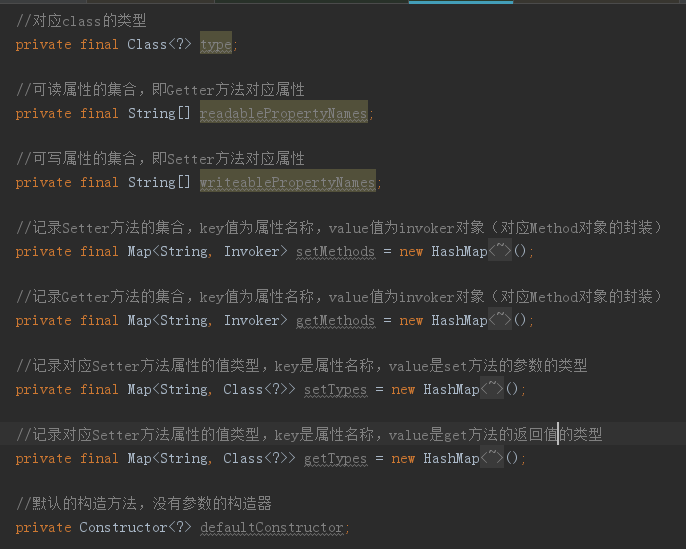
构造函数
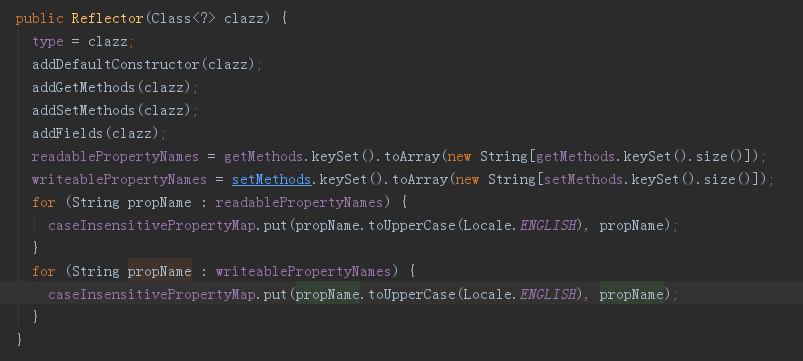
- type :初始化type字段
- addDefaultConstructor ():获取默认构造函数。
- addGetMethods():处理目标class中的Getter方法,填充getMethods和getTypes字段。
- addSetMethods():处理目标class中的Setter方法,填充setMethods和setTypes字段。
- addFields():处理目标class中没有Getter和Setter方法的字段。
- caseInsensitivePropertyMap:初始化caseinsensitivePropertyMap集合,其中记录了所有大写格式的属性名称。
addGetMethods()
源码图示
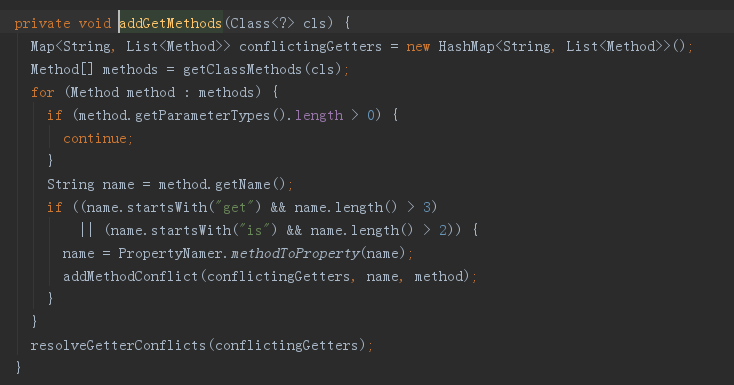
大致流程:
- 首先获取当前目标类及其父类的定义的所有方法的唯一签名及其Method对象,对应的方法为getClassMethods()
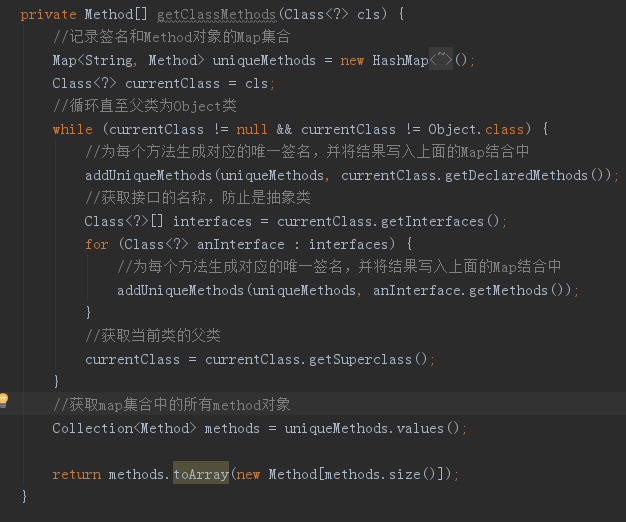

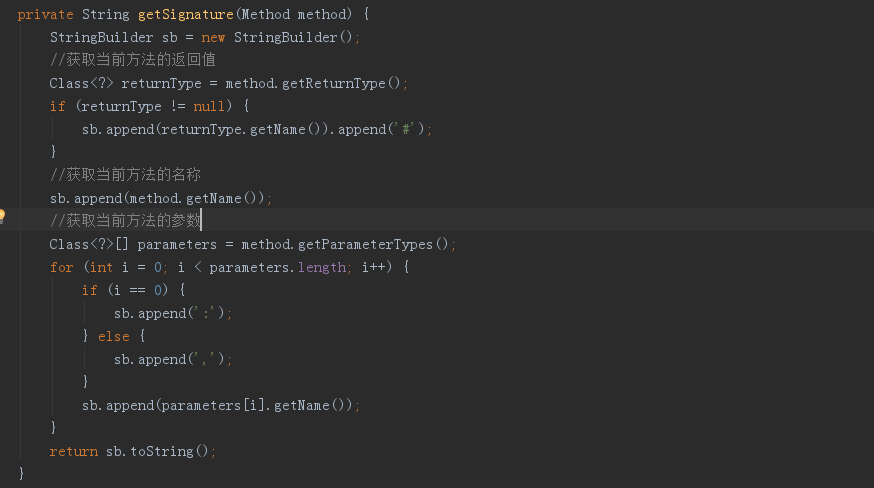
- 当子类覆盖了父类的Getter方法且返回值发生了变化,在第1步就会出现两个不同的签名,这显然不符合我们的预期要求。所有便会调用resolveGetterConflicts()方法解决冲突
private void resolveGetterConflicts(Map> conflictingGetters) {
for (Entry> entry : conflictingGetters.entrySet()) {
Method winner = null;
String propName = entry.getKey();
for (Method candidate : entry.getValue()) {
if (winner == null) {
winner = candidate;
continue;
}
Class winnerType = winner.getReturnType();
Class candidateType = candidate.getReturnType();
if (candidateType.equals(winnerType)) {
if (!boolean.class.equals(candidateType)) {
throw new ReflectionException(
"Illegal overloaded getter method with ambiguous type for property "
+ propName + " in class " + winner.getDeclaringClass()
+ ". This breaks the JavaBeans specification and can cause unpredictable results.");
} else if (candidate.getName().startsWith("is")) {
winner = candidate;
}
} else if (candidateType.isAssignableFrom(winnerType)) {
// OK getter type is descendant
} else if (winnerType.isAssignableFrom(candidateType)) {
winner = candidate;
} else {
throw new ReflectionException(
"Illegal overloaded getter method with ambiguous type for property "
+ propName + " in class " + winner.getDeclaringClass()
+ ". This breaks the JavaBeans specification and can cause unpredictable results.");
}
}
addGetMethod(propName, winner);
}
}
addSetMethods() 逻辑与 addGetMethods() 差不多,我就不在重复叙述了。
addFields()会将这些没有get set方法的字段添加到 setMethods() getMethods()的集合中,逻辑如下面:
private void addFields(Class clazz) {
//获取目标class中的全部字段
Field[] fields = clazz.getDeclaredFields();
for (Field field : fields) {
if (canAccessPrivateMethods()) {
try {
field.setAccessible(true);
} catch (Exception e) {
}
}
if (field.isAccessible()) {
//判断在setmethod 中是否已经处在有这个属性了
if (!setMethods.containsKey(field.getName())) {
int modifiers = field.getModifiers();
if (!(Modifier.isFinal(modifiers) && Modifier.isStatic(modifiers))) {
//如果这个属性不是Final或者静态,将其添加在setmethod和settype中
addSetField(field);
}
}
if (!getMethods.containsKey(field.getName())) {
//如果这个属性不是Final或者静态,将其添加在getmethod和gettype中
addGetField(field);
}
}
}
//检查是否有父类,继续递归执行该过程
if (clazz.getSuperclass() != null) {
addFields(clazz.getSuperclass());
}
}
正文到此结束
热门推荐
相关文章
Loading...











![[HBLOG]公众号](https://www.liuhaihua.cn/img/qrcode_gzh.jpg)

